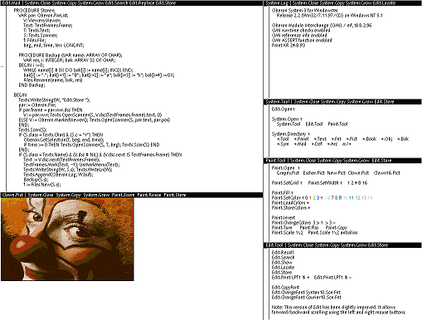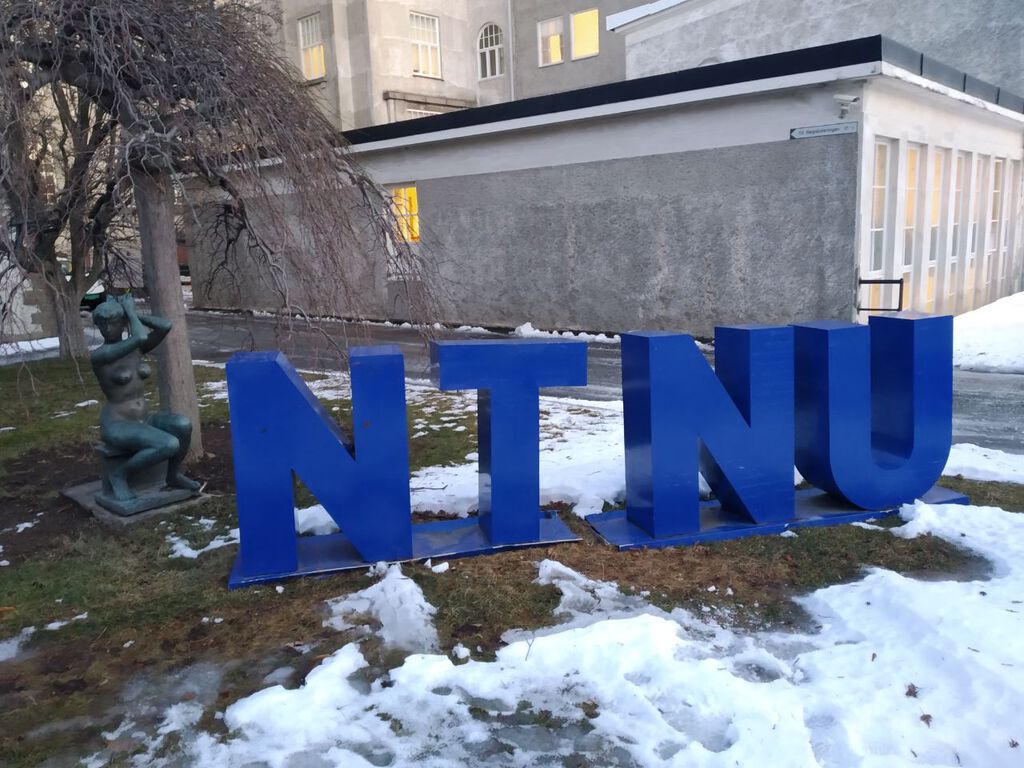What have I been up to?
No blog updates for almost half a year - so at least a summary of what I did since January is in order.
Thinking about all the changes since mid March due to Corona, I get the impression that I spent most of my time here in Trondheim installing countless different videoconferencing and communication tools (Zoom, Teams, Slack, ...) and using them for so many virtual meetings. But, luckily, that's not all.
In fact, I have been busy creating a new version of NTNU's compiler course, since March also in the form of youtube videos. The semester here in Trondheim is over (and "spring semester" definitely was a misnomer this year, we had new snow until mid May here in Trondheim) and there is time to prepare for student projects.
I am happy to have found five highly motivated master students to work on interesting topics on the intersection of system software and compilers/programming languages. Some of the students will be working on the Plan 9 and Inferno operating systems from Bell Labs as well as Project Oberon by Niklaus Wirth.
Amazingly, all these projects share common ideas. Plan 9 was the successor of research Unix (8th to 10th editions) at Bell Labs, developed initially by the experienced Unix creators (Rob Pike, Ken Thompson, Dave Presotto and Phil Winterbottom). It is especially interesting since it tries to get rid of all the cruft that has accumulated in commercial (and open source - looking at you, Linux!) Unix variants and to build an OS that makes it easy to build distributed systems in a highly networked environment. Inferno is a project inspired by and forked from Plan 9 (around version 2, I think) which replaces native user-mode software by code executed in a virtual machine environment. The success of Java (which is itself already 25 years old now, yikes) seems to have had an influence here, too...
Oberon is the successor of Niklaus Wirth's Pascal and Modula-2 languages. Wirth started to build his own hardware and create the required system software at ETHZ to support his research and teaching. Oberon is the culmination of these projects; with Project Oberon Wirth also designed his own hardware description language (Lola) and RISC CPU (confusingly called RISC5 as the sixth in a series of iteratively more complex RISC designs - but Wirth was first) to run the Oberon language, operating system and integrated user interface. Readers of my blog might remember my previous experiments to run Project Oberon on an FPGA.
How does all of this fit together now? The relation between Plan 9 and Inferno (which is now commercially supported by VitaNuova systems in York, UK) is obvious. But there is more to it, which you can see if you compare a screenshot of Project Oberon and Rob Pike's integrated Acme development system for Plan 9. In his paper, Rob mentions a lineage of influences between different system. All starts with the Cedar system at Xerox PARC, where Wirth spent sabbaticals in 1976/77 and 1984/85 (according to Wikipedia), which was a major inspiration for Oberon. Acme, in turn, tries to apply some of the Oberon ideas to a development system for Plan 9 and, in turn, Inferno with its own Limbo programming language as well as the predecessor Alef on Plan 9.
So we're talking ancient unsupported operating systems here, right? Not quite... some of the Unix developers (Rob Pike and Ken Thompson) now work at Google on the Go programming language. The third person in the Go design team is Robert Griesemer, who was a PhD student at ETH Zürich with Niklaus Wirth and Hanspeter Mössenböck. Small world, isn't it?
I already mentioned Xerox PARC (Palo Alto Research Center). One of the interesting projects developed at PARC was the Smalltalk system developed by Alan Kay, Dan Ingalls, Adele Goldberg and many more talented researchers. Do you remember that Wirth spent some time at Xerox? So Smalltalk is the system missing in the overview here. It's very interesting in itself and the topic of a future blog post.
Tags: Trondheim, NTNU, Update, Plan9, Inferno, Oberon, Smalltalk


Picture credits: Oberon - SomPost (license BSDU), Acme - unknown, LPL license
Old VAXen never die...
...they just move North (shamelessly stolen from the NetBSD/VAX web page).
No, I didn't take an actual VAX up North (my two VAXen are currently in storage in Germany), but a large suitcase full of other electronic parts went with me to Trondheim, Norway in early December. As expected, this resulted in a special luggage examination at Nuremberg airport. Luckily, the customs officers didn't require an explanation of every single of the many PCBs...
So, as some of my readers already know, I have decided to end my commitment with Coburg University at the end of 2019 in order to accept a position as associate professor for compiler design at NTNU in Trondheim.

Arriving at the airport in Værnes, I was greeted with the appropriate weather:

Luckily, I got an upgrade to my rental car from a puny Polo to a nice Mercedes GLC. This helped quite a bit, considering the road conditions:
![Trondheim street Trondheim street] airport](https://multicores.org/blog/pics/trondheim/street.jpg)
So, last week I started my new job at the institutt for datateknologi og informatikk (Department of Computer Science). Stay tuned for more!
![IDI sign IDI sign]](https://multicores.org/blog/pics/trondheim/idi.jpg)